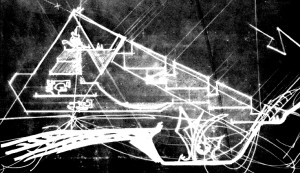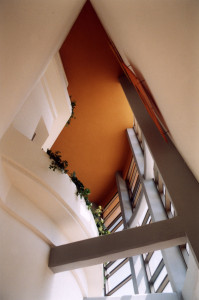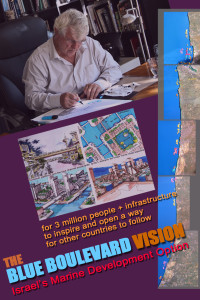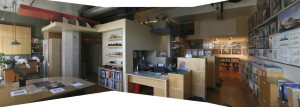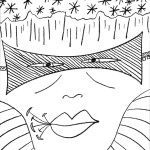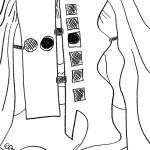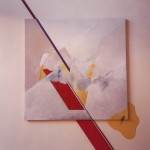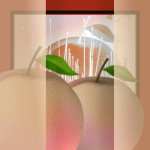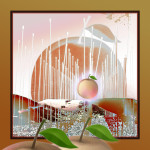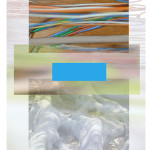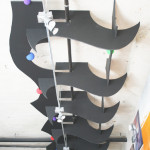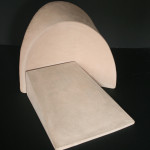Crossing Borderlines

In 1508, Michelangelo, then 33 years old, was called to Rome by Pope Julius II, who commissioned him to paint the Sistine Chapel. “I am a sculptor, not a painter,” said Michelangelo. “You will paint it,” said the Pope, “or else.” What started with the Pope’s idea of painting the twelve apostles became a project that involved more than 300 figures, including prophets and nudes, decorative medallions, thirteen scenes from the Old Testament, and sixteen lunettes of the ancestry of Christ.
Without making comparisons, my short “Crossing Borderlines” video is an autobiographical statement of a “Renaissance way of thinking.” It is not just about traversing national boundaries. It is about embarking into explorations. It includes successes and failures, hesitations, ambiguities and mistakes. The unplanned frequently derailed us from our path and became dominant. The unexpected became a source of discovery.
According to psychologist Seymour Epstein’s cognitive-experiential self-theory, humans have two parallel but interacting modes of information processing. The rational system is analytic, logical, abstract, and requires justification via logic and evidence. In contrast, the experiential system is holistic, affective, concrete, experienced passively, processes information automatically, and is self-evidently valid.
Epstein argument is that the key to intelligence is the ability to flexibly switch between modes of thought, depending on the task demands.
When I first started to write a story of our life, I named it “A Path in Architecture.” The idea was to tell some stories about our experiences encountering great teachers and architects, to recall ideas that influenced our practice, and to convey an insight about the process of “making something out of nothing.” As the first draft reached four hundred pages, less than half way, I realized that our journey had gone through many sideways that could not be accounted for by solely walking through a single path. I changed the title to “Crossing Borderlands.” It remains in the making.
Several months ago, a business-related networking group offered me an opportunity “to present what I do in ten minutes.” I decided that, rather than give a speech, I would produce a video that would provide images of some places, people and works in the context of our life timeline, a sort of “a trailer of our nine lives.” Projects that took years would be shown in seconds. Meaning had to be kept to its essentials.
Our moving and switching practices have been frequently – but now always – the consequence of negative experiences turned into positive ones. My early consciousness of Israel’s long history and of the Holocaust through reading, my personal experiences in Israel when I was eleven, my disillusion with Fidel Castro’s revolution when I visited Cuba at fifteen, and my direct confrontation with the wave of antisemitism in Argentina that followed Eichmann’s capturing in Buenos Aires, contributed to channel my Socialist and Zionist ideals, before my eighteenth birthday, into my decision to emigrate to Israel.
Four years later I married Ruth, a classmate at the Technion’s School of Architecture. Dissatisfied with the school’s philosophy at the time (twenty-five years later I returned to the Technion as a teacher) we decided to continue our studies in Rome. It was one of our best life decisions. We remained in Italy seven years.
Our return to Israel from Italy when we had it all – work, friends and a nice attic two hundred meters away from the Trevi Fountain – was motivated by Zionism and my longing for Israel. Our moves from Tel Aviv to Los Angeles, and fifteen years later, from Los Angeles to Tel Aviv, were generated by negative experiences: deep recessions. Our return to Southern California was all positive, motivated by “an offer I couldn’t refuse.”
All our trips were goal-oriented, thoroughly planned and dominated by the desire to learn from direct contact with historic and contemporary masterworks. On the other side, our artworks were mostly impulsive, not generated by immediate gain. They were the product of “an urge.”
Our early heroes in architecture were Le Corbusier, Alvar Aalto and Buckminster Fuller, yet as soon as we discovered Frank Lloyd Wright’s works and his philosophy of Organic Architecture, we embraced it. In spite of Wright’s controversial life, most of his writings remain as actual today as when they were published.
In choosing teachers – Bruno Zevi (history and architecture criticism,) Luigi Pellegrin (architecture,) Sergio Musmeci (structures,) Jack Grapes (poetry,) Joseph Mugnaini (drawing,) Norman Corwin (writing) – we were motivated by their qualities as human beings, not only by their skills.
Most of our architectural projects have been the result of commissions. We dealt with some of them without having any previous knowledge on the subject. When Israel’s Ministry of Housing assigned us to design a senior housing building in Jaffa, our first approach was to visit many buildings of the same type, observe people’s behavior in them and establish goals beyond the ones provided by the program. Only then we started to design. I guess we did something right. Fifteen years after completion, there is a permanent waiting list of hundreds to get a living unit at the Senior Housing in Jaffa.
Getting into real estate, back in 1982, was the result of lack of work in architecture. Inspired by John Portman’s book “The Architect as Developer,” in 1985 I obtained my real estate broker license and we started to develop single family houses in LA’s Westside. We found the property, put together a limited partnership with investors, designed the new residence, build it and then marketed it for sale. Many years later, following the crisis of 2008, we re-invented ourselves once again. Ruth founded Farm Urbana and I came back to real estate. Although my relationship to it remains a marriage of convenience based on professionalism, I value the knowledge that comes from its practice. I help people to go through a complicate process that extends well beyond “selling and buying houses,” and I visit thousands of homes and learn about people’s values by observing their choices – something I would recommend young architects to experience.

WESTWOOD LA Poster
As a filmmaker, I am still an amateur aspiring to professionalism. Although my interest in good cinema goes back to my teenage years, without schooling or formal training, I am on a bumpy road. Nevertheless, I plan to keep on riding it. I learn every day by doing, by listening to what filmmakers tell, and by watching attentively how films are produced.
Going through the process of drastic editing, I realized that dear family members and friends would have to be left out from the video. My relationship to them is so wide and deep that it would take a long feature film with a cast of hundreds, spreading through three continents and spoken in eight languages, to make justice to the role they played in our lives. I even minimized the exposure of our daughter Gabby, now a psychiatrist practicing in Israel, in order to focus on meaningful work-related results. At the end of the video I made an exception for my aunt Marta Frenkel, an attorney still practicing at ninety, to whom I am deeply indebted.
Architecture is the mother art, but it cannot solve all the world’s problems alone. When Frank Lloyd Wright was asked, during the last years of his life, “what is the future of architecture?” his answer was: “the future of architecture is the future of humanity. If humanity has a future, so will architecture.”
Drawings (Rick) / Paintings and Digital Media (Ruth) Sculptures (Rick) Pottery (Ruth)
- Masks 1
- Masks 2
- Masks 3
- Masks 4
- Masks 5
- White and Red Diagonals
- Boy
- Crust of the Earth
- Landscape
- Fiber and Peach 1
- Fiber and Peach 2
- Peach with Colors
- Oil Pumps
- In the Water
- EM-Wires-5
- EML-Wires-10
- The Tree and the Apple
- Ceiling Sculpture
- Breast 3
- Semi-flat 1
- Semi-flat 2
- Pair 2
- Pair 3
- A-Pair 5
 Architecture Awareness
Architecture Awareness
